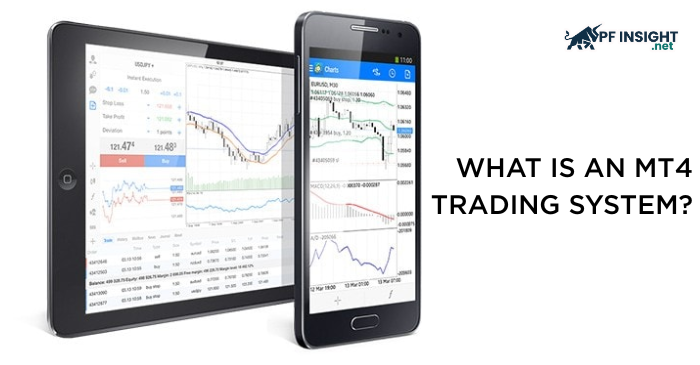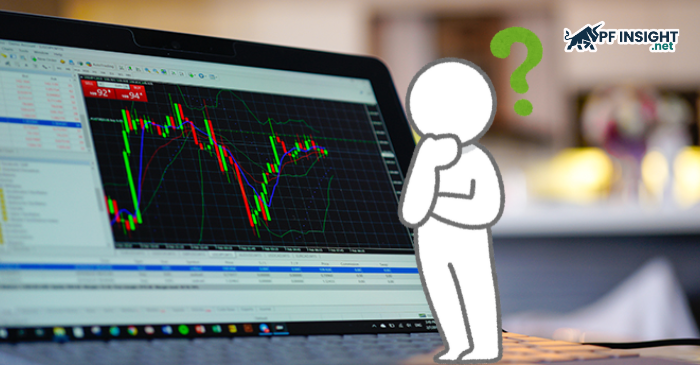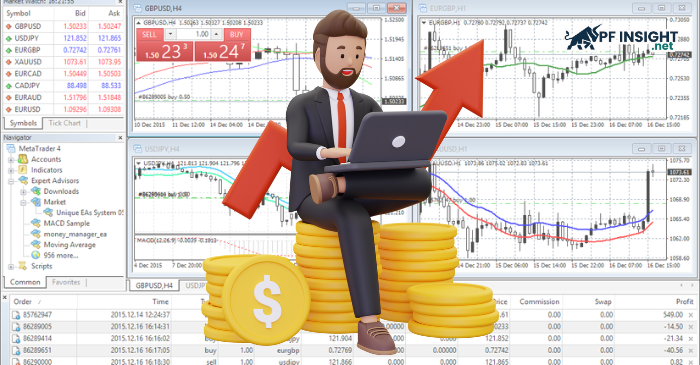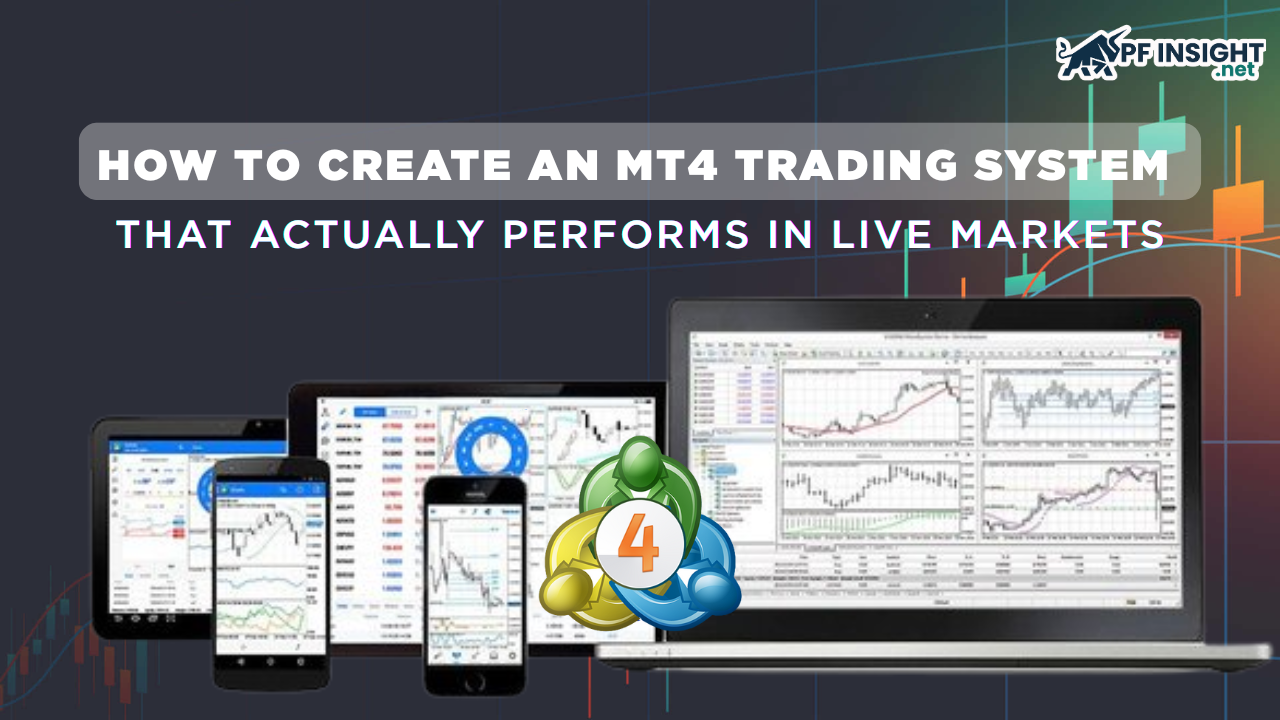MetaTrader 4 (MT4) is one of the most popular trading platforms today, providing traders with powerful tools to build and test automated trading strategies. However, for a system to perform effectively in live market conditions, it takes more than just coding or installing indicators; you need a structured development process that’s validated through data and real-world testing.
In this article, Pfinsight.net will go with you to explore how to create a truly effective MT4 trading system, from defining your idea to building trading rules to testing and optimizing, ensuring the system can operate sustainably under real market conditions.
- Top Forex Prop Firms with MT4 support – In depth Review
- MT4 vs MT5 – Which platform works best for Prop Firm traders?
- Top 10 prop trading in Canada for Forex, stocks and crypto traders
What is an MT4 trading system?

An MT4 trading system is a trading framework built and operated on the MetaTrader 4 (MT4) platform. In Forex trading, developing an effective MT4 trading system is what separates emotional trading from strategic, rule-based decision-making. Many traders achieve good results during backtesting but fail when applying their system in live markets. The main reason often lies in poor design or insufficient testing, making the system unable to adapt to real market conditions. Essentially, it is a structured set of rules designed to help traders make data-driven trading decisions.
A trading system typically includes the following key components:
- Entry rules: Define the conditions and timing for opening buy or sell positions.
- Exit rules: Determine when to take profit or cut losses.
- Risk management: Control trade size, risk-to-reward ratio, and profit targets.
- Supporting tools (indicators, EAs, scripts): Assist in decision-making or automate trading actions.
What makes an MT4 trading system unique is its automation capability. You can use Expert Advisors (EAs) to automatically scan for signals and open and close trades based on predefined logic. However, even without using an EA, a trading system on MT4 can still be built manually as long as it follows a consistent, disciplined set of trading rules.
Why many MT4 trading systems fail in live markets

Many traders spend weeks or even months building and testing their MT4 trading system, only to find that when applied in live markets, the results are completely different from what they expected. The issue doesn’t lie in the MT4 platform itself but often comes from an unrealistic development and testing process. Below are the most common reasons why MT4 trading systems tend to fail in real market conditions:
Overfitting – excessive optimization on historical data
This is the most common mistake: traders tweak their systems too precisely to achieve perfect backtest results, unknowingly creating a strategy that only performs well on past data. When applied to live markets where conditions constantly change the system quickly loses effectiveness.
Ignoring real-world slippage and spread
During backtesting, many traders use idealized conditions (low spread, no slippage). In live markets, spreads fluctuate constantly, especially during news releases or high volatility. Failing to account for this leads to much lower real profits than backtest projections.
Skipping forward testing before going live
Backtesting only shows how a system performed in the past. To verify real stability, traders need to perform forward testing running the system on a demo account or with a small live balance to see how it reacts to new, real-time data.
Lack of adaptability to changing market conditions
An MT4 trading system designed for trending markets can fail during sideways phases and vice versa. Without regular parameter adjustments or structural updates, a system will quickly become outdated.
No clear risk management plan
No matter how good a system is, it cannot survive without proper risk management. Many traders focus only on entry points but forget to set stop-losses, define drawdown limits, or adjust position size based on volatility. This often leads to account blowouts after a short losing streak.
Step-by-step guide: How to build your MT4 trading system
An effective MT4 trading system is not built simply by choosing the right indicators or coding an EA It starts with a well-structured process. Below are 7 essential steps to help you design a system that truly performs in live market conditions.

Step 1: Define your trading style
Before starting, identify what type of trader you are: Scalper, Day Trader, Swing Trader, or Position Trader.
Each style requires different timeframes, indicators, and trading frequencies. Choosing your trading style from the start gives your system a clear direction and prevents inconsistency or strategy conflicts.
Step 2: Select suitable tools and indicators
On MT4, you can use a variety of technical tools such as Moving Average, RSI, MACD, Bollinger Bands, etc. Choose 1 – 3 core indicators that you understand thoroughly; avoid overloading your system with too many tools.
Examples:
MA + RSI for a trend-following system
MACD + Bollinger Bands for a reversal system
The key is simplicity and consistency the more indicators you add, the harder it becomes to synchronize signals.
Step 3: Set clear entry and exit rules
This is the most important part of any MT4 trading system.
Entry rules: define the technical conditions or triggers for entry (e.g., RSI > 50 and price crosses above MA 20).
Exit rules: define when to take profit, cut losses, or reverse positions.
Each rule should be specific and unambiguous so that the system can execute trades automatically and reduce emotional influence.
Step 4: Apply capital and risk management
No system can survive without proper risk management.
Determine the maximum risk per trade (e.g., 1-2% of your account).
Use fixed or ATR-based stop-losses.
Maintain a minimum risk/reward ratio of 1:2 to ensure long-term profitability.
A good system is not the one that wins most trades; it’s the one that loses small and profits steadily.
Step 5: Automate with an Expert Advisor (EA)
Once your rules are clearly defined, you can convert them into an EA on MT4.
EAs can automatically scan for signals, execute trades, close positions, and record trading logs without manual intervention.
However, before running your EA on a live account, thoroughly test it with both backtesting and forward testing to ensure the logic works correctly.
Step 6: Test and evaluate system performance
Use MT4’s Strategy Tester to run backtests on historical data.
Analyze key metrics such as:
Profit Factor (profitability ratio)
Drawdown (maximum equity decline)
Win Rate and Expectancy (average expected return per trade)
Once you achieve stable results, conduct forward testing on a demo account for at least 2-4 weeks to validate real-time performance.
Step 7: Optimize and refine
After testing, don’t rush into live trading. Instead, evaluate the following:
Does the system perform well across multiple currency pairs?
Is it stable during periods of high volatility?
If the results vary, adjust your parameters or add filters to improve signal accuracy.
An effective trading system is one that’s tested and validated continuously, not just once, but over time.
How to test and optimize your MT4 trading system
Once you’ve completed the process of building your MT4 trading system, the next crucial phase is testing and optimization. This is where you evaluate whether your system truly performs effectively and reliably when applied to live market conditions.
Backtesting
Backtesting is the first step to see how your system would have performed in the past.
MT4’s built-in Strategy Tester allows you to run your system on historical price data and analyze performance metrics. When backtesting, make sure to:
- Use high-quality historical data (tick data) for better accuracy.
- Choose a long enough testing period (at least one year).
- Account for realistic spreads instead of idealized prices.
Track key performance indicators such as:
- Profit Factor – profitability ratio
- Max Drawdown – maximum equity decline
- Win Rate – trade success percentage
- Expectancy – average expected profit per trade
Example: A system with a Profit Factor of 1.8 and a drawdown below 15% is considered stable for an initial testing phase.
Forward testing – testing in real-time
Backtesting helps you understand past performance, but forward testing is the real challenge. It involves running your system on a demo account or small live account to see how it reacts to real-time market conditions. The goal is to verify:
- Whether the system executes trades correctly according to its logic.
- If performance remains stable across different market conditions.
- Whether there’s any delay, slippage, or execution issue in real time.
Forward testing should last at least 2 – 4 weeks, and only when results are consistent with your backtest should you consider moving to a live account.
Optimization – fine-tuning system parameters
Optimization helps you identify the best parameter combinations to enhance system performance. However, many traders fall into the trap of over-optimization, where a system looks perfect on past data but fails in live trading. To optimize effectively:
- Use Strategy Tester’s Optimization feature to test multiple parameter sets.
- Focus on robust zones (areas of consistent performance), not just the best-performing single point.
- Apply walk-forward analysis divide historical data into multiple segments to test system durability across time.
Post-optimization system evaluation
After testing and optimization, assess your system holistically based on:
- Consistency: stable performance across different time periods.
- Low Drawdown: risk remains within acceptable limits.
- Profit Factor > 1.5: indicates sustainable profitability.
- Clear Logic: you understand why the system works, not just because it’s profitable.
Tips to make your MT4 trading system more profitable
A stable MT4 trading system is already a major achievement but to make it truly profitable and sustainable, traders must continuously optimize, evaluate, and adjust their systems to match changing market conditions. Below are several practical tips to help you enhance your MT4 system’s performance and profitability.

Combine quantitative data with real market factors
A good trading system can’t rely solely on technical signals.
Incorporate quantitative elements (indicators, price action, volume) together with real-world factors like news, liquidity shifts, and trading sessions.
Example: A scalping strategy might perform well during the London session but suffer from slippage during the New York session understanding this helps you choose the most effective trading time.
Maintain a regular retesting cycle
Markets evolve quickly, and your system needs regular “health checks.”
Perform backtesting and forward testing every 1 – 2 months, especially after major volatility or news-driven shifts.
Consistent testing allows you to detect early signs of system decay before a series of losses silently erodes your equity.
Use a trading journal to analyze performance
Don’t rely solely on MT4’s built-in reports.
A manual or Excel-based trading journal gives you deeper insights into:
- Which trades yield the highest profits
- Which currency pairs perform best
- Which times of day lead to most losses
With this data, you can fine-tune your system’s logic and eliminate low-performance patterns.
Optimize in small parts don’t rebuild the whole system
A common mistake is to completely overhaul the system after a few losing cycles.
Instead, optimize one element at a time for example, adjust a single indicator, change the timeframe, or refine your exit rule.
This method helps you identify which change actually improves results while keeping your MT4 trading system stable.
Combine manual and automated methods (semi-automated approach)
If you rely only on EAs, your system may respond slowly to sudden volatility.
Try a hybrid trading setup let the EA handle signal detection while you manually decide when to enter or exit under special conditions.
This approach balances the objectivity of automation with the flexibility of human judgment.
Track performance in cycles, not trade by trade
You can’t accurately judge a system after only 5 – 10 trades.
Monitor performance over 50 – 100 trades to gather statistically meaningful results.
This prevents emotional reactions avoiding overconfidence after short-term wins or discouragement after temporary losses.
Conclusion
An effective MT4 trading system is not defined by indicators or code it’s built on how you test, optimize, and maintain trading discipline. Start with simple rules, validate them using real data, and refine your system over time. When your strategy is grounded in logic and consistency, it can remain solid and reliable even in live market conditions.
Explore more related articles in our Technical Analysis section.







